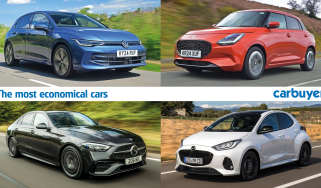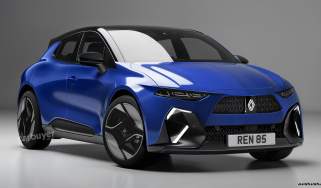New Renault Clio prototype review
We drive the Renault Clio prototype to see how it’s shaping up against the Ford Fiesta
The Renault Clio is one of the UK’s best-selling superminis and this is expected to continue with the fifth-generation Clio, which arrives in showrooms in October. The car features an all-new design and will renew the Clio’s rivalry with the Ford Fiesta, Vauxhall Corsa and Volkswagen Polo. To see how it's likely to fare, we’ve been driving prototypes of the upcoming supermini in France.
The new Clio is based on the new Renault-Nissan Alliance underpinnings, dubbed CMF-B. This makes it slightly shorter than the car it replaces but helps reduce weight and offers easy adaption for an electrified model.
Some models of the new Clio will have mild-hybrid technology, but all of the prototypes we drove featured conventional petrol engines. The TCE 100 is a spritely 99bhp turbocharged 1.0-litre three-cylinder petrol engine with a five-speed manual gearbox. It will also be available with an X-tronic CVT automatic gearbox.
This engine emits a typical three-cylinder sound when revved hard and offers strong power delivery from around 1,500rpm upwards, ensuring swift progress, which means you’ll rarely have to use higher revs to get up to speed.
The five-speed gearbox is unchanged from the outgoing car but has been tweaked to make it feel more precise, with a smooth, shorter gear change. At motorway speeds, the Clio prototype felt composed with the engine sitting at 1,800rpm at 60mph in fifth gear, despite the additional wind noise generated by the camouflaged bodywork. It left us with the impression that the final production version of this 99bhp model will offer enough performance for most people’s daily driving requirements.
More reviews
Part of this composure is down to the latest Clio’s new CMF-B underpinnings, which give this new model a slightly more precise feel than the previous generation model. The steering is accurate and quick to respond, and the car feels improved in corners. There’s some body roll in the corners, but the chassis helps to hide this. On a smooth test track surface, the new Clio offered a composed ride, so we’ll need to wait and see how it handles a typical UK road surface.
The new Renault Clio will also be offered with a more powerful 129bhp 1.3-litre four-cylinder petrol engine. This can only be specced with a seven-speed dual-clutch automatic gearbox. This combination offers provides strong acceleration, even if the gearbox is slightly over-eager at times to change up.
Production models will feature switchable driving modes but we weren’t able to try them on the prototype. Sadly, shift paddles mounted behind the steering wheel felt cheap and lacked a tactile feel, leaving us hoping that Renault will improve them for the final production model.
Renault has confirmed it will offer an 84bhp 1.5-litre diesel engined model in the UK. We drove a more powerful 113bhp version of this engine that has yet to be confirmed for the UK market. Featuring a six-speed manual gearbox this engine boasts strong pulling power from low revs with a slight increase in engine noise at motorway speeds over its petrol-engined counterparts. This seems like a small compromise for the greater economy compared with the petrol-engined variants.
The cabins of our test cars were mostly disguised, but we can confirm that interior and boot space will be increased over the previous model thanks to the new underpinnings. We’ve seen new soft-touch materials on test models that will raise interior quality, and there should be an array of new technology on offer, including a curved 9.3-inch infotainment display.
Verdict
To keep pace with its rivals, the new Clio needed to make a huge step forward from the old car. From our initial test drives, we think that Renault is on track to achieve this. The new Clio offers an improved driving experience, which, when combined with an enhanced cabin and new technology, should make the Renault supermini one of the most complete all-rounders in its class.


















